Safe Buying Guide
If you're seeking advice to these and other common safe questions, then we're here to help. This guide is filled with qualified answers to general safe questions and will even provide useful tips for the more studied safe expert.
This guide is intended to offer solid advice when buying a safe from any manufacturer, not just Safe Fortress.
Here are the steps we suggest when deciding which safe is right for you:
Check for a thick solid steel wall with walls (Safe Fortress Guarantee*)
Its essential that the safe you purchase has both a solid steel door and walls of substantial thickness. Without this base level of steel protection, any safe can be opened within minutes despite the hoopla of any advertised protection features. While the majority of top-selling safes on the market tout a plethora of protection features, virtually all fail miserably in this essential area.
The safe you choose must have at minimum a ½" thick solid steel door and a ¼" thick solid steel body.
Steel is very expensive and heavy, vastly increasing the safe's build cost and the cost of shipping overseas to the reseller. As a result, nearly all oversea manufactured safes (and even many local-built safes) cut these costs by making their safes with thin sheet metal wrapped around various forms of drywall to give the appearance of a
Be highly suspicious if the safe manufacturer or reseller doesn't state solid steel, or lists "composite" for their wall or door material, as this can be anything from sheet metal wrapped around wood to sheet metal and drywall.
Also be on the lookout for safe sellers that list just "door thickness" rather than the barrier material type and thickness, as this is a recent trick many underhanded safe marketers employ. By listing the total thickness of the safe door including the safe dial, barrier material, airspace, inner bolt work, etc.... the provided figure can sound quite impressive, while actually preventing the buyer from obtaining any solid information on how thick the barrier material actually is or what it's made of.
Stick with a UL approved lock (Safe Fortress Guarantee)
Always check that the safe you plan to purchase has a UL approved lock. Without a UL approval, there's a 95% chance the safe's lock comes from China. The vast majority of safe manufacturers who equip their safes with "their own" lock brand also use Chinese locks. While highly affordable, Chinese-built locks are notoriously undependable and are prone to early failure.
We routinely receive calls from agonized safe owners who are permanently locked out of their safe by a malfunctioning Chinese lock. Opening these safes is generally a very costly and time-consuming ordeal as it's nearly impossible for even a licensed locksmith to obtain accurate blueprints to aid in a clean, repairable entry into the safe. Most safe owners in this unfortunate position opt for the faster and less expensive forced entry option. The safe is rendered unusable after a forced entry and the owner is stuck with a hefty bill - and the need to replace it with a reliable and secure safe... many current clients sought out our company after experiencing one or more highly unpleasant lockouts with inferior safes.
Avoid Fireboard or Drywall-based Safes
Although fire safes constructed with fireboard, drywall, fibreboard, or other panel-based insulation materials make up the majority of safes sold today, they provide inferior fire protection. Because of this, we ensure all our Fire Safes are true Composite-Clad, providing the upmost burglary protection.
Consider Entry Convenience
A safe that is slow to open is a safe that isn't likely to be used. Adding a quality electronic lock can make opening the safe quick and easy, as well as enabling the user to reset the combination when needed without the aid of a locksmith or combination kit. For the ultimate in user convenience and security, a high-grade biometric lock can't be beat.
Check for Relockers (Safe Fortress guaranteed)
All quality safes should have relockers to help ensure the safe remains locked in the case of a burglary. Relockers are hardened pins that are triggered in a variety of ways during an attack and cannot be retracted without hours of drilling. The number of relockers on a safe will range from 2-10+ depending on the size and burglary grade of the safe.
Make an informed Decision
At this point you are no longer one of the countless uninformed victims that unscrupulous safe builders rely on to generate a quick buck at great personal risk to the buyer. You are now armed with enough knowledge to make an informed purchase about one of the most important assets you will own. We hope you choose SafeFortress in securing your assets.
